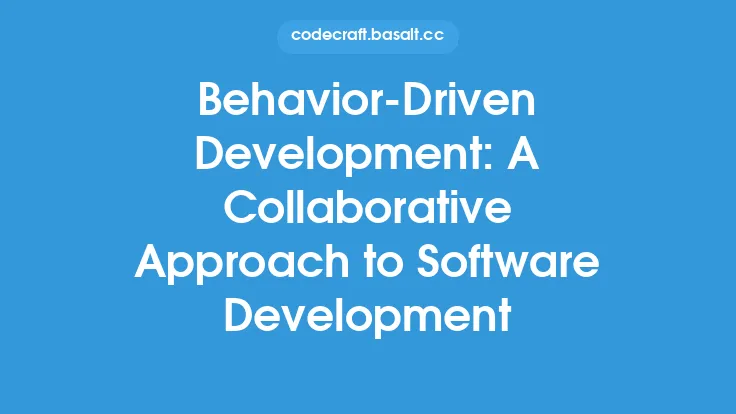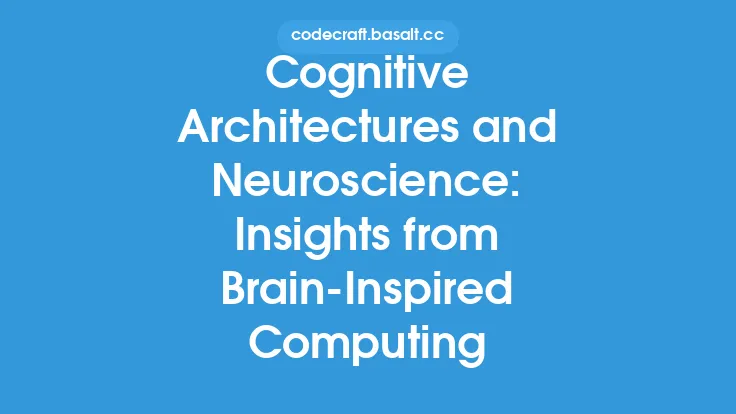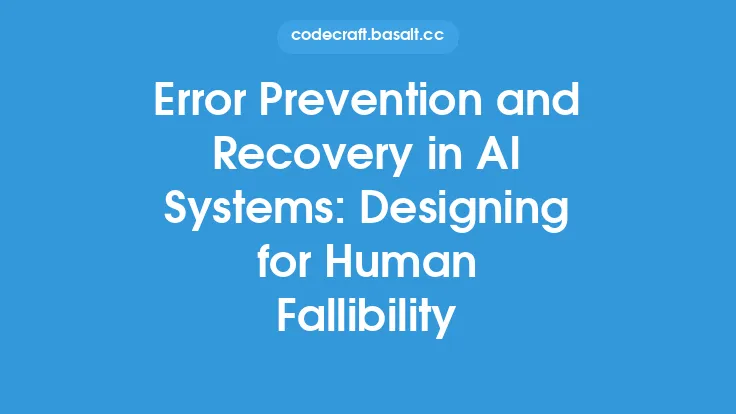The development of artificial intelligence (AI) systems has traditionally been a top-down approach, where designers and developers create systems based on their own understanding of user needs. However, this approach can lead to systems that are not intuitive, not user-friendly, and do not meet the actual needs of the users. In recent years, there has been a growing recognition of the importance of involving users in the design and development process of AI systems. This approach is known as co-creation and participatory design, and it has the potential to revolutionize the way AI systems are developed.
Introduction to Co-Creation and Participatory Design
Co-creation and participatory design are collaborative approaches to AI development that involve users and stakeholders in the design and development process. These approaches recognize that users have a unique understanding of their own needs and behaviors, and that they can provide valuable insights and contributions to the design and development process. By involving users in the design and development process, co-creation and participatory design aim to create AI systems that are more intuitive, more user-friendly, and more effective in meeting user needs.
Key Principles of Co-Creation and Participatory Design
There are several key principles that underlie co-creation and participatory design. These include:
- User involvement: Users are involved in the design and development process from the outset, and their contributions are valued and respected.
- Collaboration: Designers, developers, and users work together as equals, sharing knowledge and expertise to create a shared understanding of user needs and system requirements.
- Iteration: The design and development process is iterative, with users providing feedback and input at each stage to refine and improve the system.
- Flexibility: The design and development process is flexible, with a willingness to adapt and change direction in response to user feedback and input.
Methods and Techniques for Co-Creation and Participatory Design
There are a range of methods and techniques that can be used to support co-creation and participatory design. These include:
- Workshops and focus groups: Bringing users and stakeholders together to discuss and explore user needs and system requirements.
- User interviews and surveys: Gathering information about user needs and behaviors through one-on-one interviews and surveys.
- Prototyping and testing: Creating prototypes of AI systems and testing them with users to gather feedback and input.
- Participatory design sessions: Bringing users and stakeholders together to design and develop AI systems in a collaborative and iterative process.
Benefits of Co-Creation and Participatory Design
The benefits of co-creation and participatory design are numerous. These include:
- Improved user experience: AI systems that are designed and developed in collaboration with users are more likely to be intuitive, user-friendly, and effective in meeting user needs.
- Increased user engagement: Users are more likely to be engaged and motivated to use AI systems that they have had a hand in designing and developing.
- Reduced errors and failures: AI systems that are designed and developed in collaboration with users are less likely to contain errors and failures, as users can provide feedback and input to identify and address potential problems.
- Increased trust and credibility: AI systems that are designed and developed in collaboration with users are more likely to be trusted and credible, as users have a sense of ownership and control over the system.
Challenges and Limitations of Co-Creation and Participatory Design
While co-creation and participatory design offer many benefits, there are also challenges and limitations to these approaches. These include:
- Resource intensive: Co-creation and participatory design can be resource-intensive, requiring significant time and effort to involve users and stakeholders in the design and development process.
- Difficulty in scaling: Co-creation and participatory design can be difficult to scale, particularly in large and complex AI systems.
- Power dynamics: Co-creation and participatory design can be affected by power dynamics, with some users and stakeholders having more influence and control over the design and development process than others.
- Technical complexity: Co-creation and participatory design can be technically complex, requiring significant expertise and knowledge to design and develop AI systems that meet user needs.
Technical Considerations for Co-Creation and Participatory Design
There are several technical considerations that need to be taken into account when implementing co-creation and participatory design. These include:
- Human-computer interaction: The design and development of AI systems needs to take into account human-computer interaction principles, such as usability, accessibility, and user experience.
- Machine learning and AI algorithms: The design and development of AI systems needs to take into account machine learning and AI algorithms, such as natural language processing, computer vision, and predictive analytics.
- Data management and analytics: The design and development of AI systems needs to take into account data management and analytics, such as data mining, data visualization, and data science.
- Cloud computing and infrastructure: The design and development of AI systems needs to take into account cloud computing and infrastructure, such as scalability, security, and reliability.
Case Studies and Examples of Co-Creation and Participatory Design
There are many case studies and examples of co-creation and participatory design in AI development. These include:
- IBM's Watson: IBM's Watson AI system was developed using a co-creation and participatory design approach, with users and stakeholders involved in the design and development process from the outset.
- Google's AI-powered chatbots: Google's AI-powered chatbots were developed using a co-creation and participatory design approach, with users and stakeholders involved in the design and development process to create a more intuitive and user-friendly interface.
- Microsoft's AI-powered accessibility tools: Microsoft's AI-powered accessibility tools were developed using a co-creation and participatory design approach, with users and stakeholders involved in the design and development process to create a more accessible and inclusive interface.
Future Directions for Co-Creation and Participatory Design
The future of co-creation and participatory design in AI development is exciting and rapidly evolving. Some potential future directions include:
- Increased use of AI and machine learning: The use of AI and machine learning in co-creation and participatory design is likely to increase, with AI-powered tools and techniques being used to support the design and development process.
- Greater emphasis on ethics and responsibility: There is likely to be a greater emphasis on ethics and responsibility in co-creation and participatory design, with a focus on ensuring that AI systems are developed and used in ways that are fair, transparent, and accountable.
- More diverse and inclusive design processes: There is likely to be a greater emphasis on diversity and inclusion in co-creation and participatory design, with a focus on involving a wider range of users and stakeholders in the design and development process.





